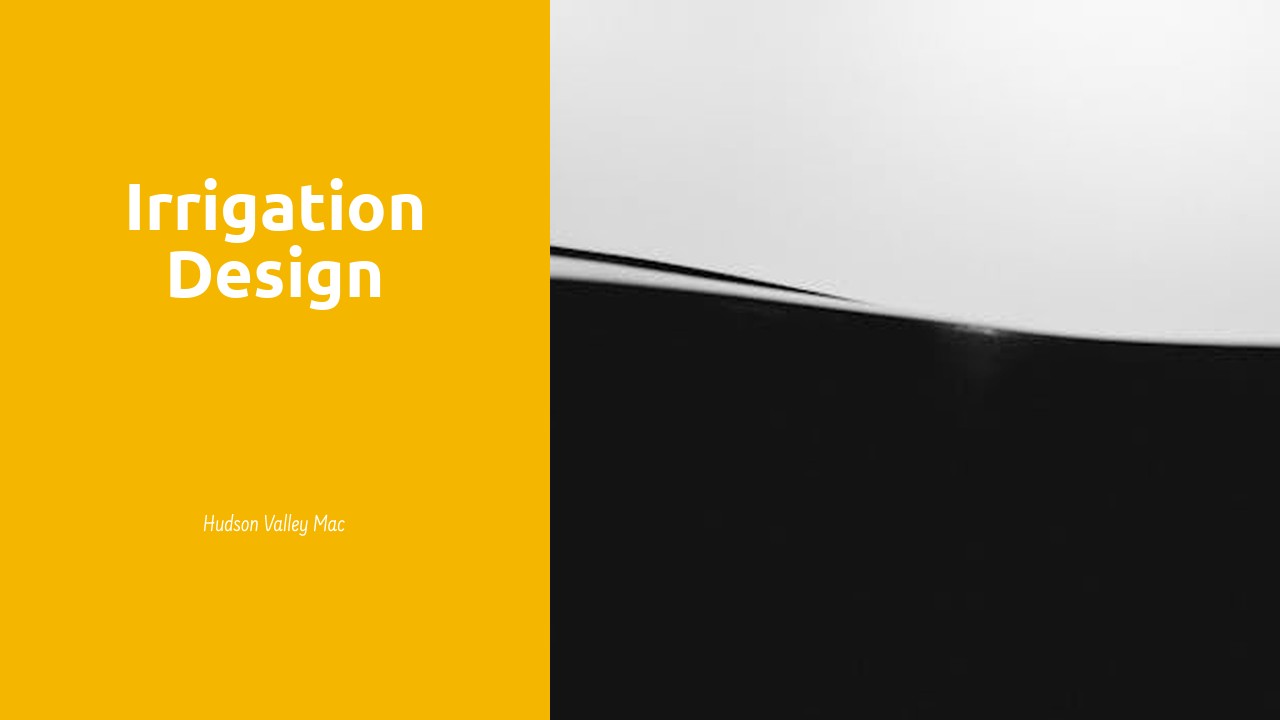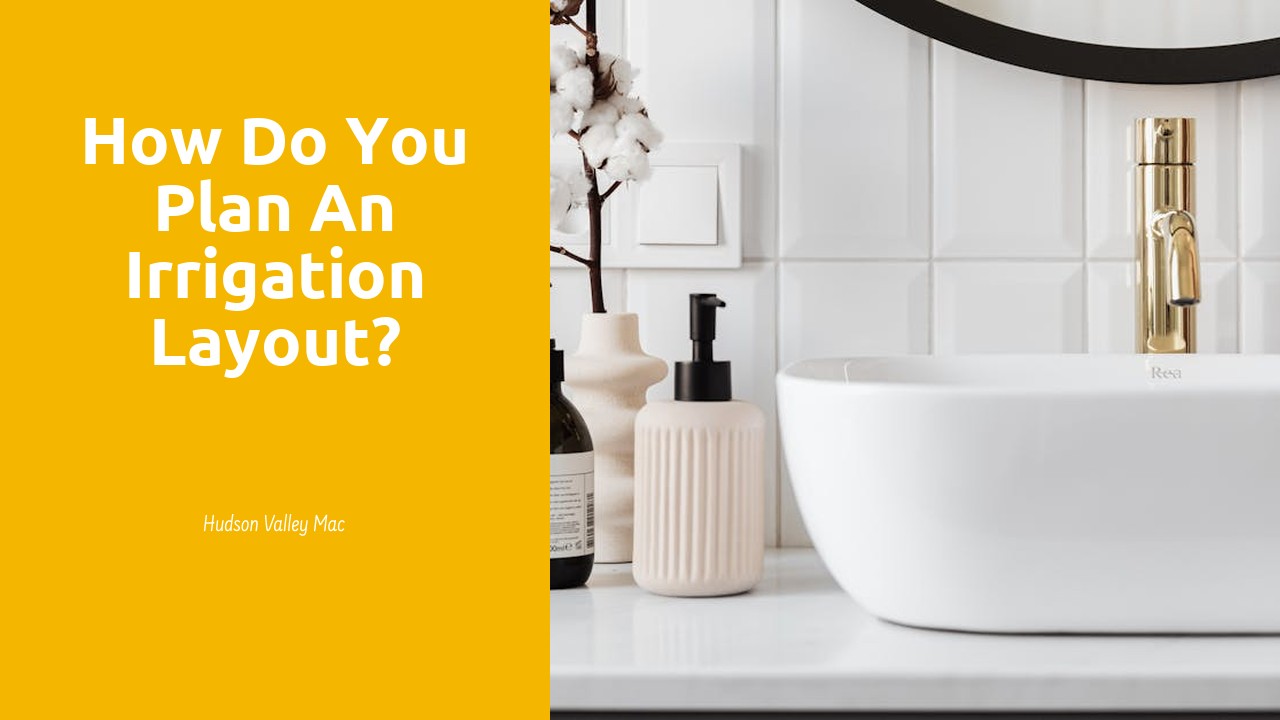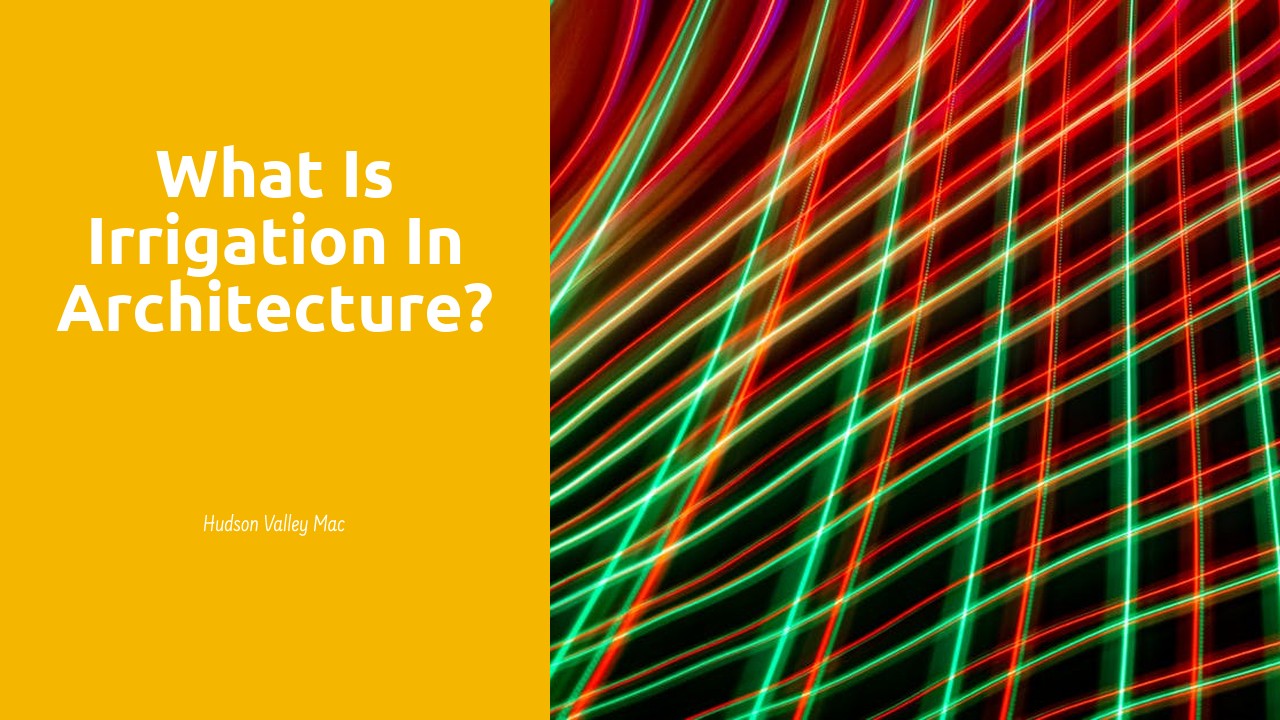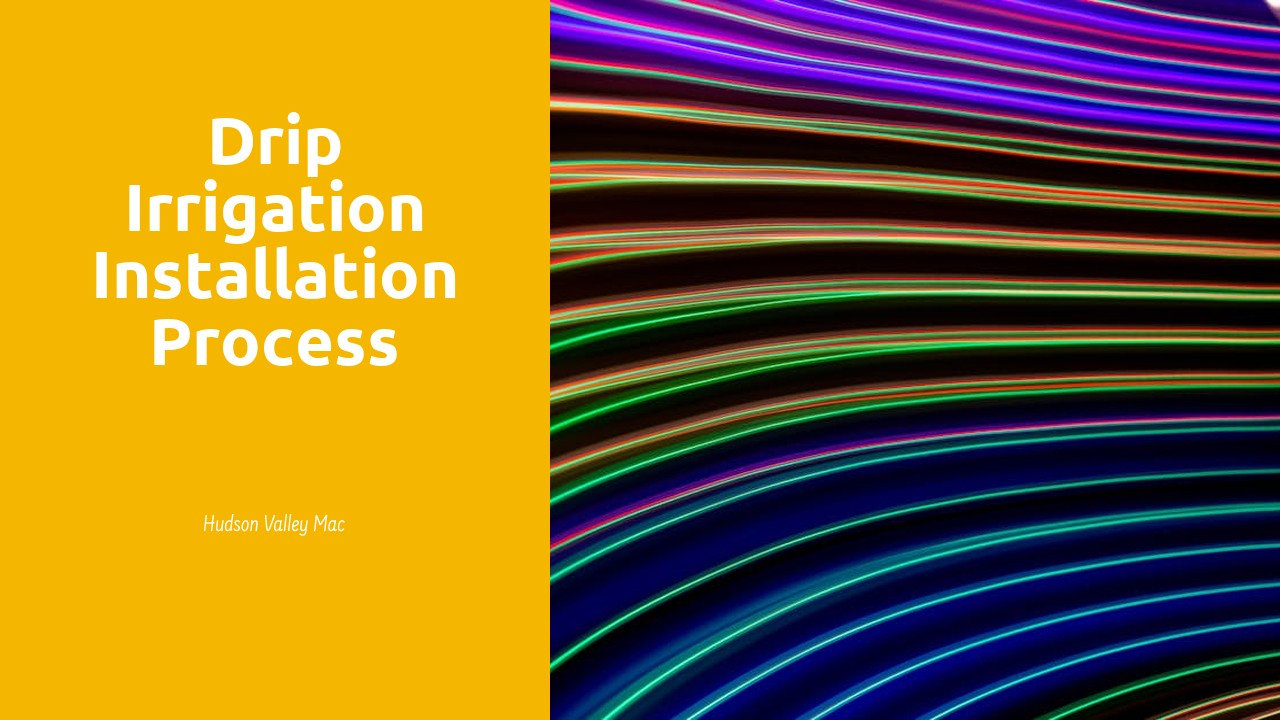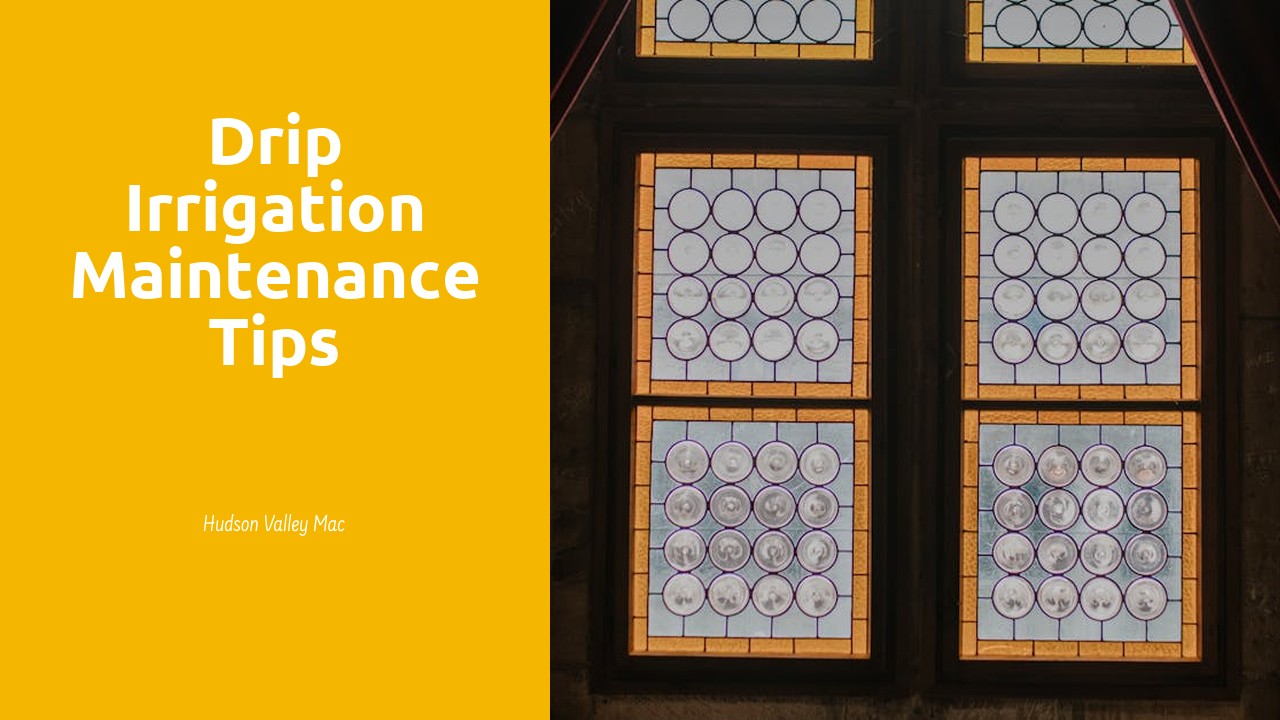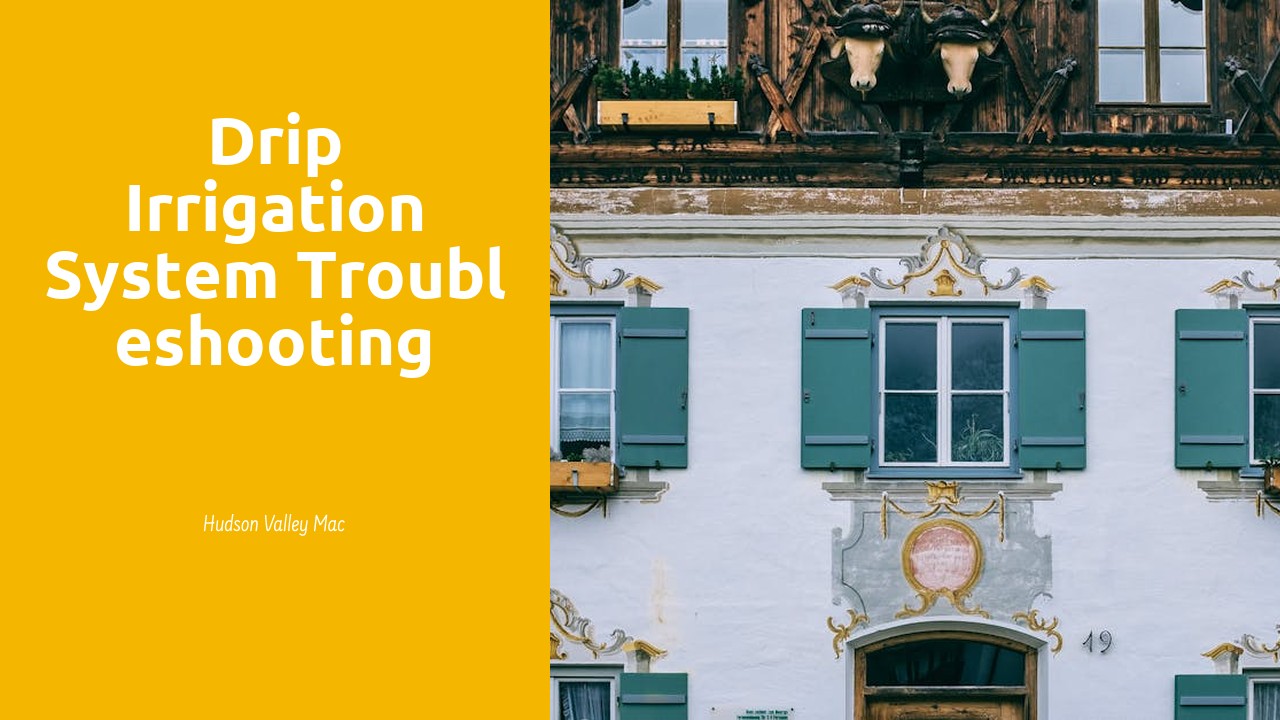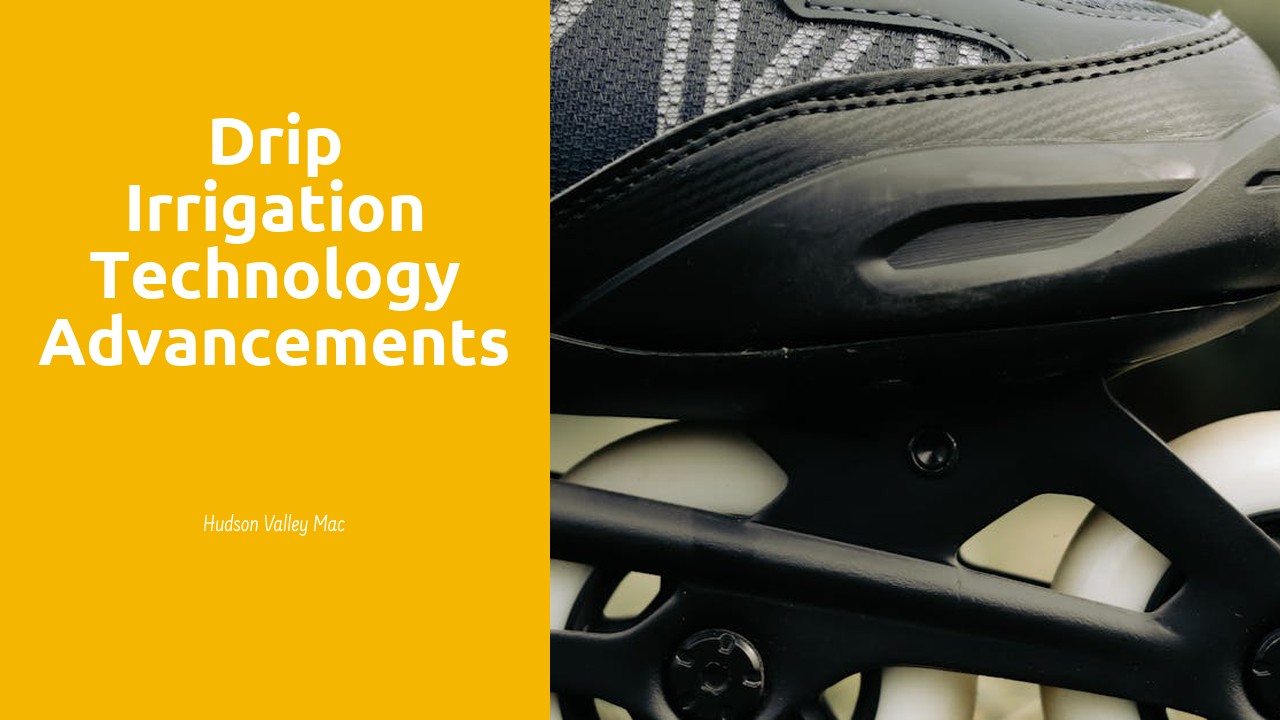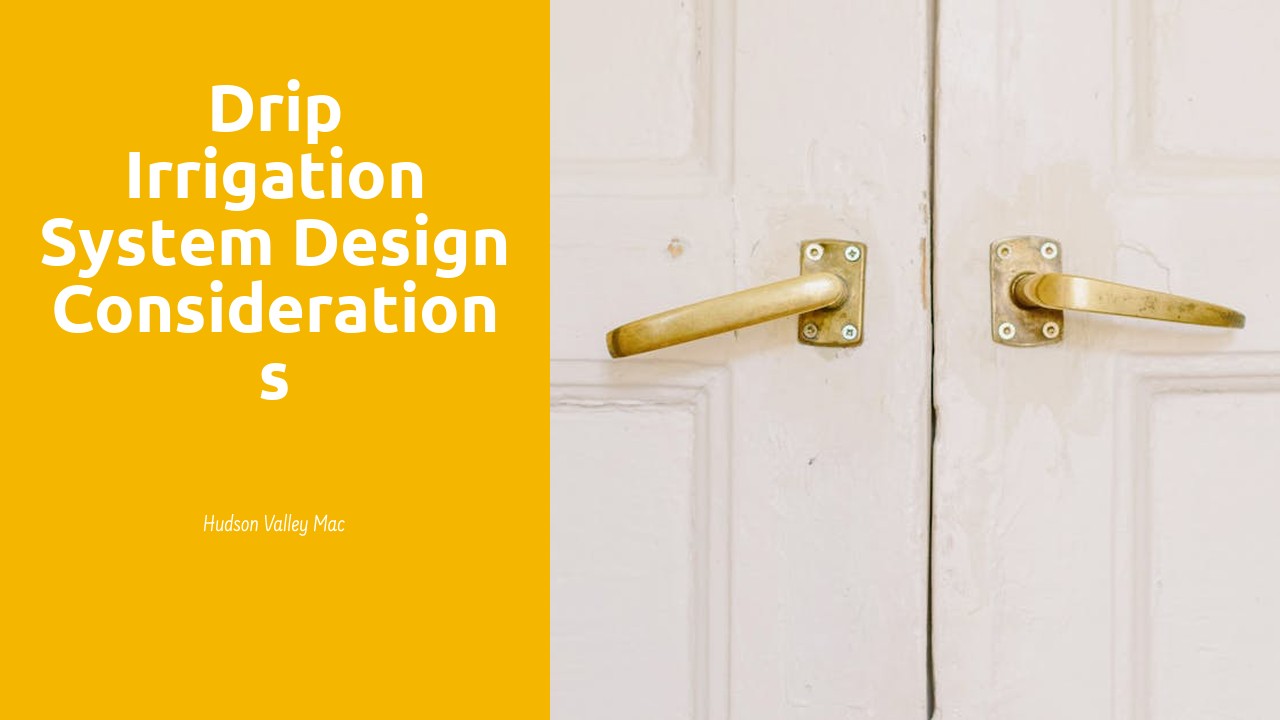
Table Of Contents
Evaluating Soil and Plant Compatibility
When considering the design of a drip irrigation system, one crucial aspect to evaluate is the compatibility between the soil and the plants that will be irrigated. Understanding the specific requirements of the plants' root systems in relation to the soil composition is essential for the success of the system. By assessing the soil type and its ability to retain moisture, along with the depth of the plant roots, you can determine the most effective way to deliver water to your crops. For instance, sandy soils may require more frequent but shorter irrigation cycles compared to clay soils with higher water retention capabilities. In the context of Irrigation Design in Georgetown, this compatibility assessment is particularly significant due to the varying soil types found in the region, ranging from sandy loam to clay soils.
Another important consideration when evaluating soil and plant compatibility for a drip irrigation system is the nutrient requirements of the plants. Different soil types may have varying nutrient availability, which can impact the overall health and productivity of the crops. By understanding the nutrient levels in the soil and the specific needs of the plants, adjustments can be made to the irrigation system to incorporate fertilizers or other nutrient delivery methods. This customization ensures that the plants receive not only sufficient water but also the necessary nutrients for optimal growth. In the context of Irrigation Design in Georgetown, where agricultural practices are diverse, tailoring the irrigation system to suit the specific soil and plant requirements is key to maximizing crop yield and quality.
Understanding Soil Type and Root Depth
Understanding the soil type and root depth is crucial when designing a drip irrigation system. Different soil types have varying levels of water retention and drainage capabilities. Sandy soils drain quickly but do not retain water well, while clay soils have excellent water retention but can lead to waterlogging. Evaluating the soil type in Irrigation Design in Woodstock helps determine the frequency and duration of watering required to meet the plants' needs. Additionally, considering the root depth of the plants is essential. Deeper-rooted plants will require a system that can deliver water to lower soil levels, ensuring their hydration needs are met adequately in Irrigation Design in Woodstock.
For optimal efficiency, the drip emitters need to be placed at a suitable depth to match the plant roots' distribution. Shallow-rooted plants will benefit from emitters placed closer to the surface, ensuring water reaches their root zone. In contrast, deep-rooted plants will require emitters placed deeper in the soil to reach their extensive root systems. Understanding the correlation between soil type and root depth is essential for designing a customized drip irrigation system that maximizes water usage and promotes healthy plant growth in Irrigation Design in Woodstock.
Managing Pressure and Filtration in Your System
Proper management of pressure and filtration is crucial in ensuring the effectiveness and longevity of a drip irrigation system. When designing your system for Irrigation Design in Halton Hills, it's essential to understand the importance of pressure regulators and filters. Pressure regulators help maintain optimal pressure levels throughout the system, preventing damage to emitters and ensuring uniform water distribution. Similarly, filters are vital for removing particles and debris from the water supply, which can cause clogging and damage to the system components.
Selecting the right pressure regulators and filters for your system is key to its success. Pressure regulators should be chosen based on the water pressure available at the water source and the requirements of the emitters being used. Additionally, filters should be selected according to the size of particles they can effectively remove. Regular maintenance of pressure regulators and filters is necessary to prevent system malfunctions and ensure efficient operation. By carefully managing pressure and filtration in your drip irrigation system, you can enhance its performance and maximize water savings in Irrigation Design in Halton Hills.
Importance of Pressure Regulators and Filters
Pressure regulators and filters play a crucial role in ensuring the efficiency and longevity of a drip irrigation system. When designing an irrigation system, it is vital to consider the specific needs of the plants and soil in the designated area. In Irrigation Design in Georgetown, pressure regulators help maintain a consistent and optimal pressure level throughout the system, preventing damage to the tubing and ensuring uniform water distribution to the plants. Filters are equally important as they help prevent clogging by trapping debris and sediment that can compromise the effectiveness of the system. By incorporating pressure regulators and filters into the design, you can enhance the overall performance of the drip irrigation system and promote healthier plant growth.
Neglecting pressure regulators and filters can result in various issues such as uneven water distribution, clogging, and ultimately, reduced plant health. In Irrigation Design in Georgetown, the importance of these components cannot be overstated. Pressure regulators help prevent excessive water flow that can lead to oversaturation or water wastage, while filters act as the first line of defense against clogging, ensuring that the system operates smoothly. By including these elements in the system design, you can minimize maintenance requirements and maximize the effectiveness of water delivery to the plants. Overall, investing in quality pressure regulators and filters is a wise decision that can significantly impact the success of your drip irrigation system.
Preventing Clogging Issues in Drip Irrigation
Clogging in drip irrigation systems can significantly impact the efficiency of water distribution to plants. To prevent clogs, it is essential to incorporate proper filtration mechanisms into the system. Utilizing high-quality filters that can effectively catch particles and sediments before they reach the emitters is crucial. Consider installing filters with smaller mesh sizes to prevent finer particles from causing clogs in the system. Additionally, regular maintenance of these filters is necessary to ensure they are working optimally and to prevent any blockages that may impede water flow. When designing a drip irrigation system for Irrigation Design in Georgetown, make sure to include the appropriate filters in your setup to mitigate potential clogging issues.
Another effective way to prevent clogging in drip irrigation systems is to implement a flushing mechanism. Flushing the system periodically helps remove any accumulated sediments or debris that could lead to clogs. This flushing process can be automated or manual, depending on the specific requirements of the system. By incorporating flushing into the regular maintenance routine, you can proactively prevent clogs and ensure the smooth operation of your drip irrigation system. When considering the design of your system for Irrigation Design in Georgetown, factor in the inclusion of a flushing mechanism to maintain optimal performance and prevent clogging issues.
Maintenance Tips for Avoiding Clogs
To keep your drip irrigation system running smoothly and prevent clogging issues, implementing regular maintenance practices is crucial. Begin by conducting routine inspections of your system to check for any potential clogs or leaks. Take time to examine the filters, emitters, and tubing for any debris that could obstruct the flow of water. By addressing these issues promptly, you can ensure that your Irrigation Design in Woodstock operates efficiently and effectively.
Furthermore, flushing the system periodically with clean water can help dislodge any sediment or mineral buildup that may lead to clogs. Consider investing in a quality filter to catch any particles before they enter the system. Additionally, using purified water or installing a water treatment system can also aid in preventing clogs and maintaining the longevity of your drip irrigation setup. By incorporating these maintenance tips into your routine, you can mitigate the risk of clogging and optimize the performance of your system for years to come.
FAQS
What factors should be considered when designing a drip irrigation system?
When designing a drip irrigation system, it is important to evaluate soil and plant compatibility, understand soil type and root depth, manage pressure and filtration, and prevent clogging issues.
How does soil type and root depth affect drip irrigation system design?
Soil type and root depth play a crucial role in determining the spacing and placement of drip lines. Understanding these factors helps in ensuring that water reaches the plant roots effectively.
Why is managing pressure and filtration important in a drip irrigation system?
Managing pressure and filtration is essential to maintain the efficiency of a drip irrigation system. Pressure regulators and filters help in controlling water flow and preventing clogs, ensuring uniform water distribution.
What are the common clogging issues in drip irrigation systems?
Common clogging issues in drip irrigation systems include sediment buildup, algae growth, and mineral deposits. Regular maintenance and proper filtration can help prevent these issues.
How can clogging issues in a drip irrigation system be prevented?
To prevent clogging issues in a drip irrigation system, it is important to follow maintenance tips such as flushing the system regularly, using filters, and monitoring water quality. Proper installation and upkeep can help avoid clogs and ensure optimal system performance.
